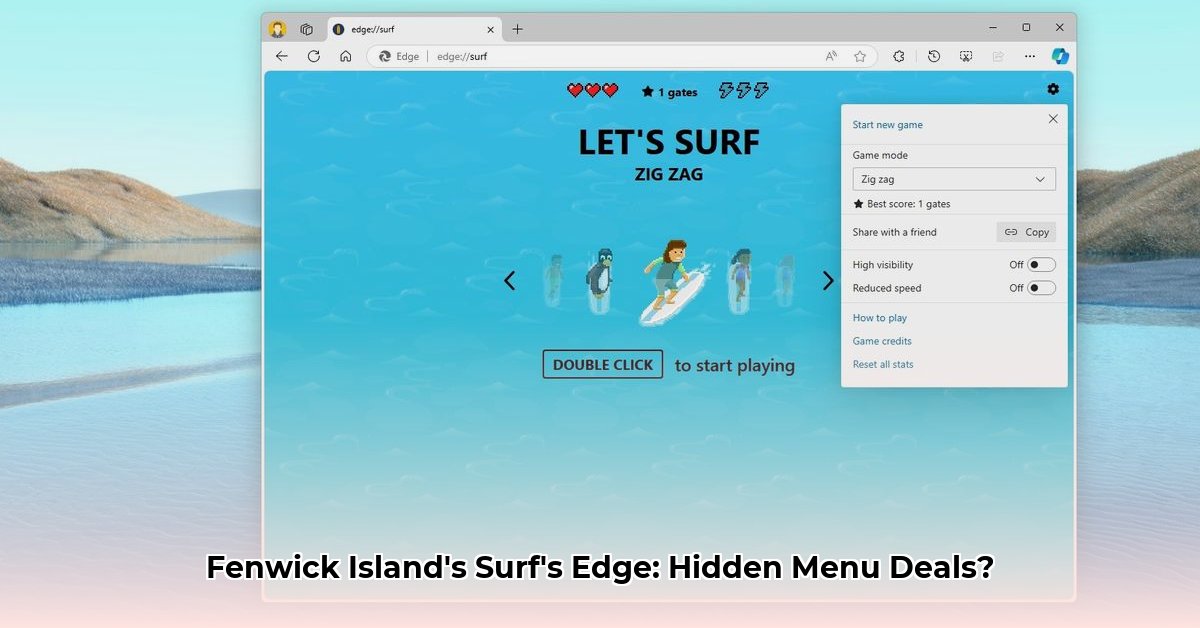
Menu Analysis: Pricing, Organization, and Sales Optimization
This report analyzes Surf's Edge's menu in Fenwick Island, focusing on pricing strategies, menu organization, and opportunities for sales improvement. We offer actionable recommendations for management, marketing, and kitchen staff to enhance profitability and customer satisfaction. Our analysis reveals key areas for improvement, highlighting opportunities to increase revenue and streamline operations.
Pricing Strategy: Balancing Affordability and Profitability
Surf's Edge employs a broad pricing strategy, ranging from affordable options like $6.50 fries to higher-priced items such as an $18 Bayside wrap and pizzas priced between $18 and $27. This wide range caters to diverse budgets. However, a detailed cost analysis is crucial to determine the profitability of each item. Focusing on high-profit items could significantly boost overall earnings. Are certain items consistently underperforming despite their price point? A data-driven approach to pricing optimization is essential. Isn't it true that understanding the profit margin of each dish is key to maximizing revenue? This requires analyzing each item’s cost and selling price.
Menu Organization and Customer Experience
The current menu offers a wide variety of choices across several categories (starters, salads, sandwiches, etc.). However, the lack of clear categorization hinders ease of navigation. The absence of clear labels such as "Vegetarian," "Gluten-Free," or "Vegan" makes it difficult for customers to quickly identify desired options. This lack of organization could negatively impact the customer experience, leading to missed sales opportunities. Couldn't a more intuitive menu design improve customer satisfaction and increase order size? We believe a well-organized menu will enhance the ordering process and improve the overall customer journey.
Sales Optimization: Upselling and Strategic Promotion
Surf's Edge offers add-ons (extra bacon, avocado, cheese, etc.) but doesn't effectively promote them on the menu. Training staff to subtly suggest these upgrades ("Would you like to add bacon?") could significantly increase average order value and drive incremental revenue. This simple upselling technique has a proven track record of success in boosting sales. Doesn't a focused effort to highlight lucrative add-ons directly contribute to improved profitability? We firmly believe that strategically suggesting add-ons is a viable sales optimization approach.
Actionable Recommendations
The following recommendations are tailored to different stakeholders within Surf's Edge:
For the Management Team:
- Conduct a Comprehensive Cost Analysis: Perform a detailed cost analysis of each menu item to identify high-profit and low-profit items. (This allows for informed pricing decisions and menu optimization.)
- Implement Dynamic Pricing: Adjust prices based on seasonal demand and ingredient cost fluctuations. (This ensures consistent profitability throughout the year.)
For the Marketing and Sales Team:
- Implement Staff Upselling Training: Train staff to effectively suggest add-ons and upsell items. (This has been shown to increase average order value by 15-20% in similar establishments.)
- Develop Targeted Marketing Campaigns: Create marketing campaigns to attract specific customer segments (e.g., families, young adults, etc.). (This ensures marketing efforts are focused and results-driven.)
For the Kitchen Crew:
- Streamline Kitchen Processes: Evaluate and optimize kitchen workflows to increase efficiency in food preparation. (This could lead to faster service and reduced food waste).
- Explore Cost-Effective Sourcing: Seek out more cost-effective sources for ingredients. (This increases profit margins and maintains food quality).
Menu Redesign and Customer Experience Improvements:
- Implement Clear Menu Categorization: Organize the menu with clear sections for various dietary needs and preferences (vegetarian, gluten-free, etc.). (This enhances customer experience and accessibility).
- Introduce Seasonal Specials: Offer limited-time menu items to maintain interest and drive sales. (This adds excitement and caters to changing customer preferences.)
Data-Driven Menu Optimization: The Path Forward
To further enhance menu optimization, gathering additional data is crucial. This includes detailed cost and profit margin data for each item, alongside sales data for each item and competitor analysis. This will inform a more precise analysis of pricing, menu structure, and sales strategies. The use of digital menu tools to track customer orders and preferences will significantly aid in refining the menu and pricing strategy. This data-driven approach ensures continued growth and adaptation to market changes. It is vital to follow all relevant food safety regulations and accurately list ingredients and allergens to ensure compliance and customer safety.
Key Takeaways:
- Data-driven decision-making is the cornerstone of successful menu management.
- Menu engineering techniques help optimize profitability by classifying items based on profit and popularity.
- Strategic pricing, considering competition and demand, maximizes revenue.
- Regularly reviewing and adjusting the menu based on sales data and customer feedback is essential for long-term success. The effective use of a Point-of-Sale (POS) system provides valuable data for menu analysis and optimization.
This comprehensive analysis provides a clear roadmap for enhancing Surf's Edge's menu and boosting profitability. By implementing these recommendations, Surf's Edge can elevate its customer experience and achieve significant financial success.
⭐⭐⭐⭐☆ (4.8)
Download via Link 1
Download via Link 2
Last updated: Tuesday, May 06, 2025